New approach to architectural construction
When choosing materials for a building project, the architect considers aspects relating to structural performance, functional requirements, and experience.
Fiber Dynamics is a project based on fibrous interactions using Carbon fiber as our smart material, known for its strength to weight ratio it’s not widely used in architecture. We are curating the design and fabrication methods, creating a new language in expressing architecture. Our approach to the project was to investigate various weaving technique to the existing shell and tensile structure and design a geometry suitable for applications.
To achieve economic feasibility of the project, the composite of carbon fiber and jute fiber, with epoxy resin is considered in the weaving technique to maintain the homogeneity of the structure. The former acts as the primary reinforced fibers and later as the secondary material which enhances the mechanical property of the structure. Our design of lay up fully utilises the advantage of carbon fibre, extremely good tensile properties, therefore we placed them parallel to major tensile stress lines.
In the present work, an attempt is made to develop Digital interface, which allows its user to determine the structural loads and material distribution of the fibers. Through this interface, he gets knowledge on how to reduce the overall use of synthetic reinforcement, to reduce the overall cost, and to enhance the mechanical properties of the structure.
</p>

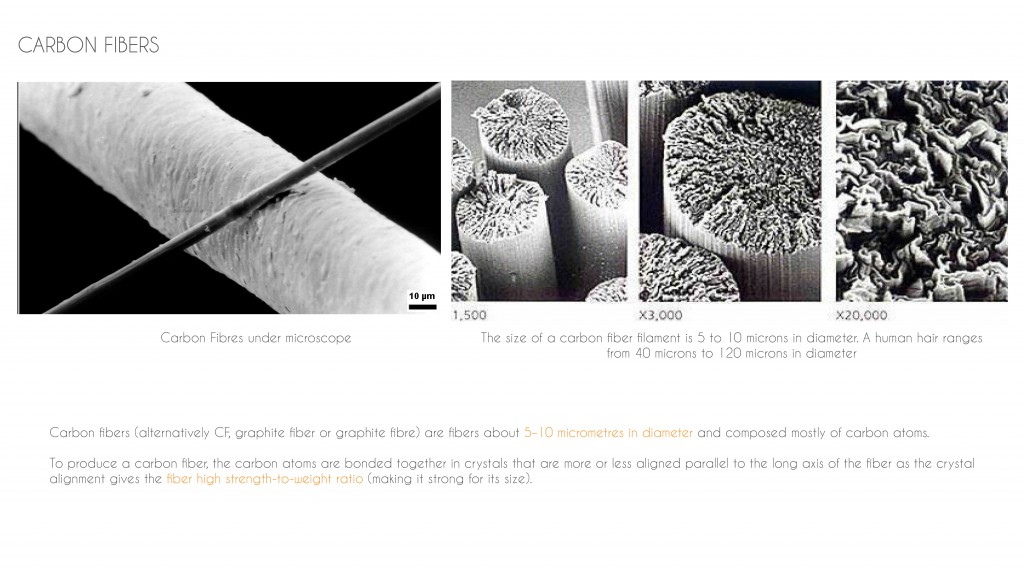

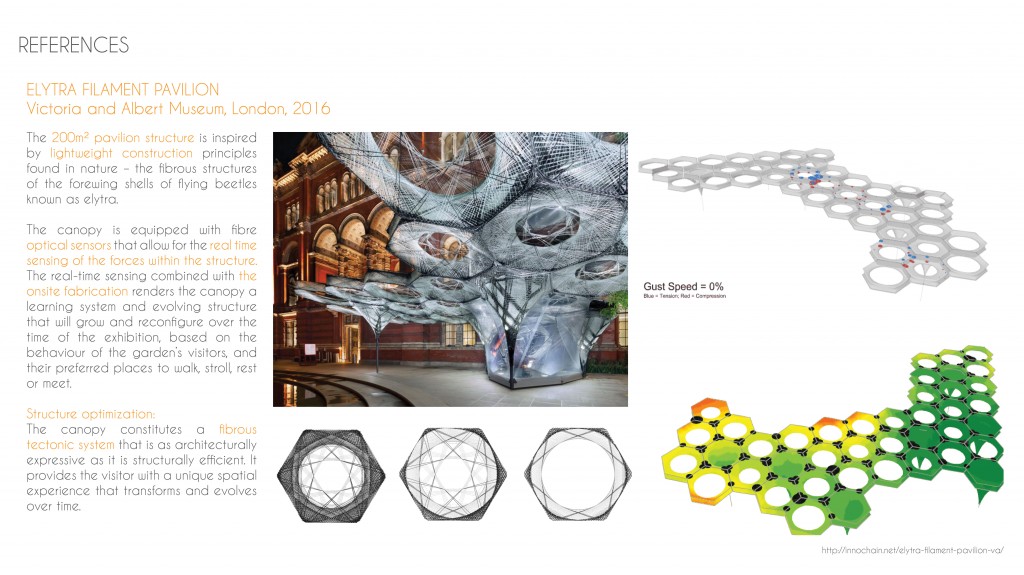
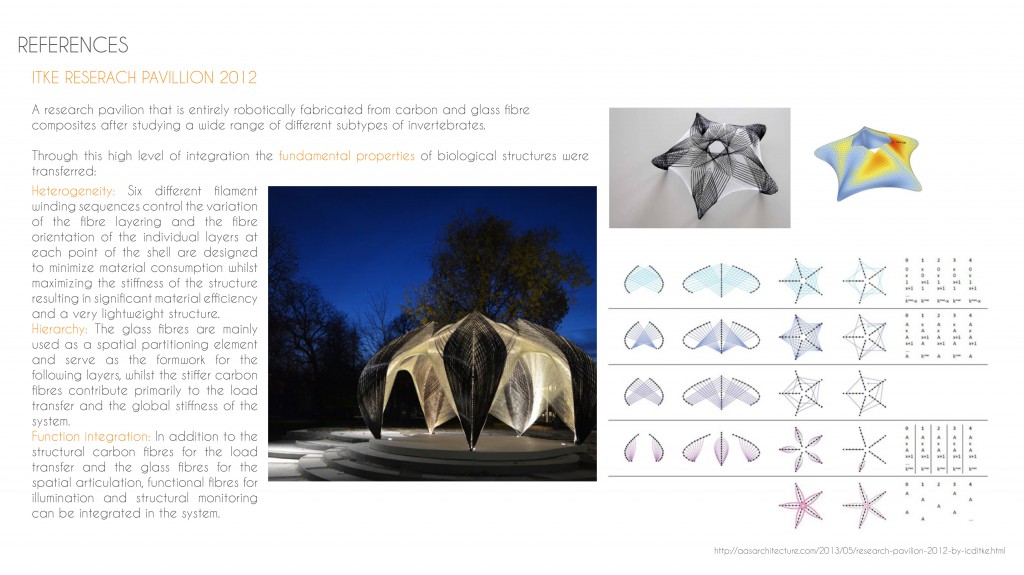
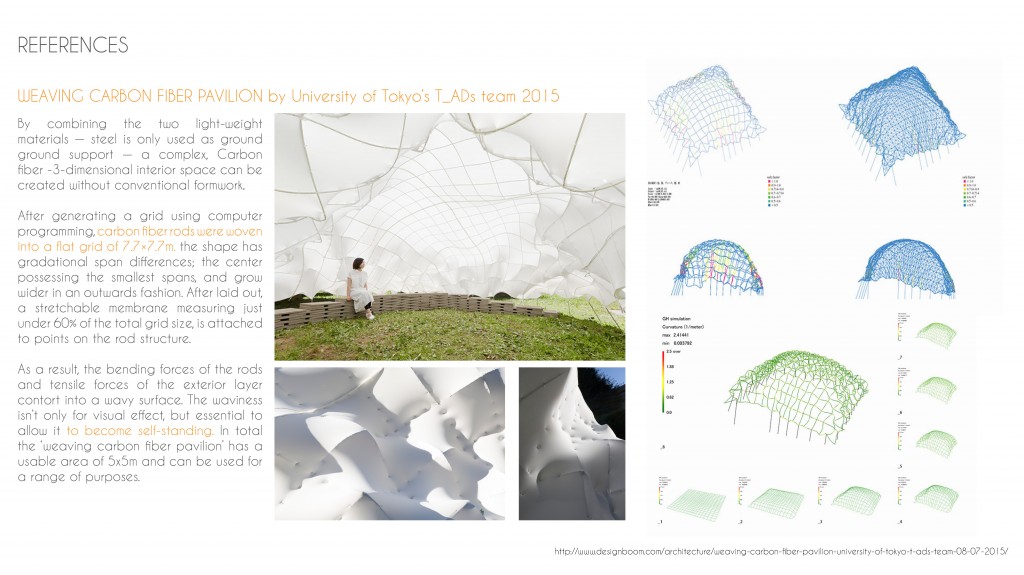
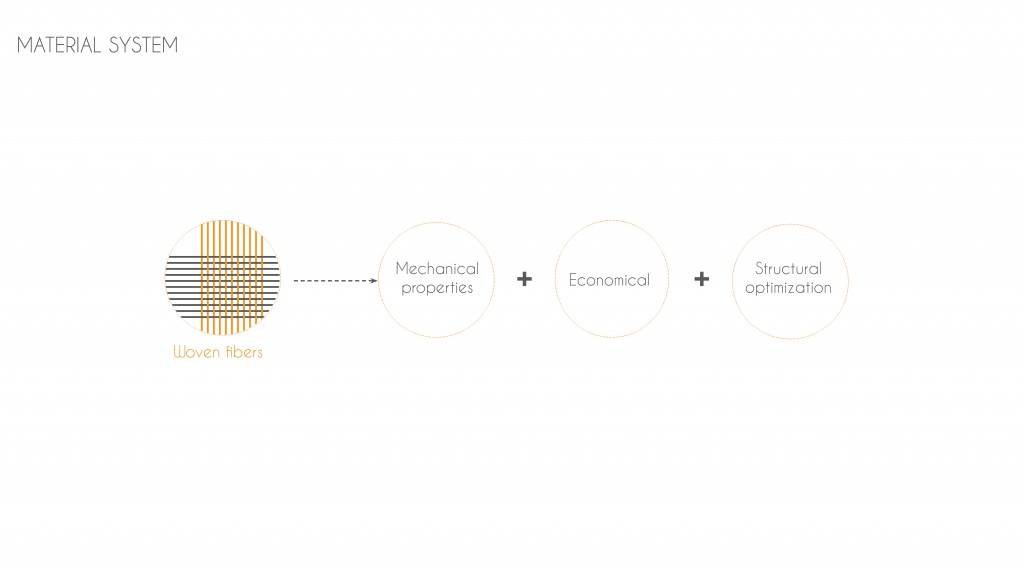
Woven system in nature :
Human body is composed of tissue fabrics and their fibers are woven and spun, a soft tissue sleeve that envelops all non articular bony surfaces of the body, comprises an inherently “smart” material that gives hard bones added strength under high impact loads.
Woven fibers are produced by the interlacing of warp (0°) fibres and weft (90°) fibres in a regular pattern or weave style. The fabric’s integrity is maintained by the mechanical interlocking of the fibres. Drape (the ability of a fabric to conform to a complex surface), surface smoothness and stability of a fabric are controlled primarily by the weave style.
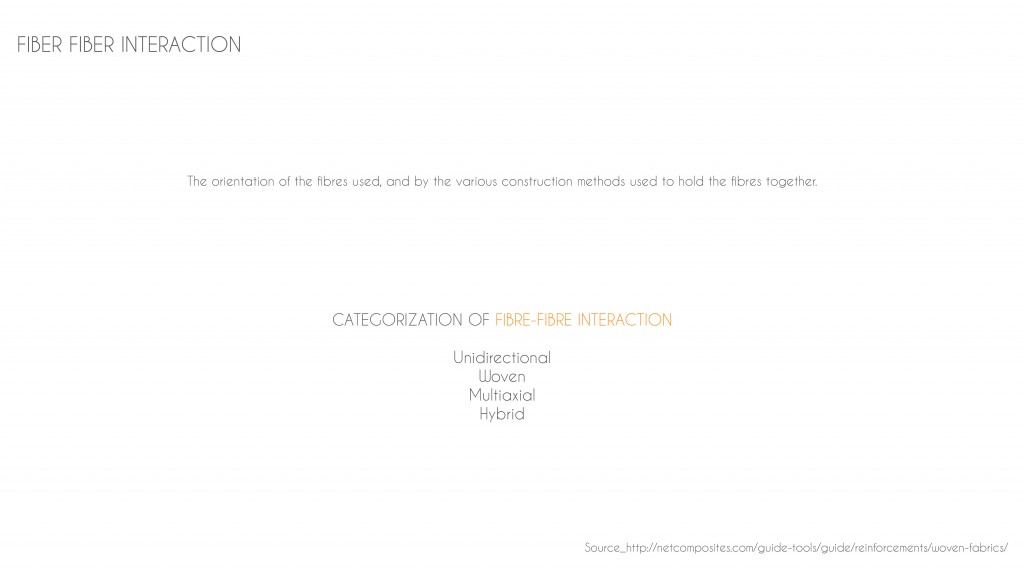
In weaving, lengthwise yarns are called warp; crosswise yarns are called weft, or filling. Most woven fabrics are made with their outer edges finished in a manner that avoids raveling; these are called selvages. They run lengthwise, parallel to the warp yarns. The three basic weaves are plain, twill, and satin. The orientation of the fibres used, and by the various construction methods used to hold the fibres together.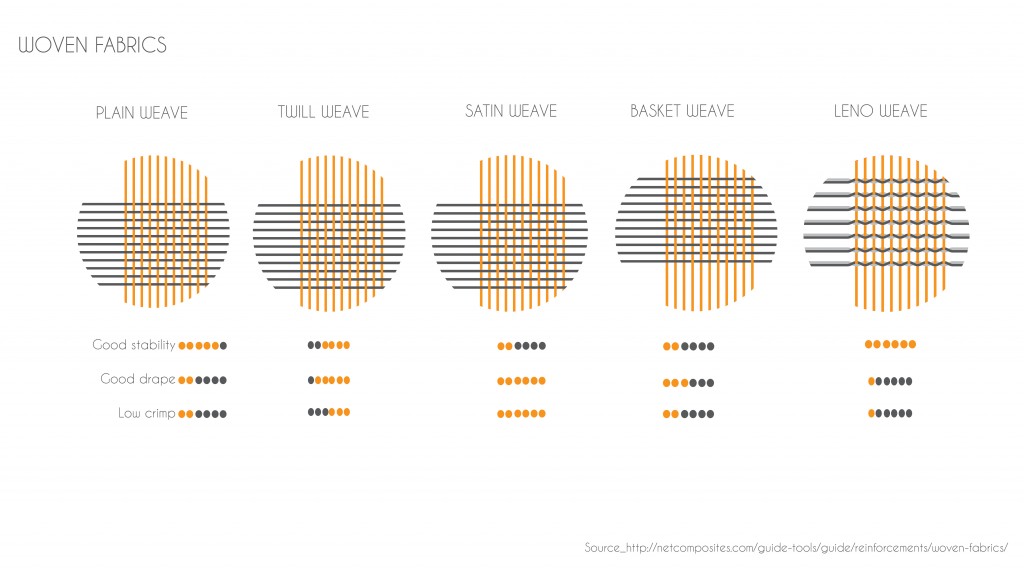
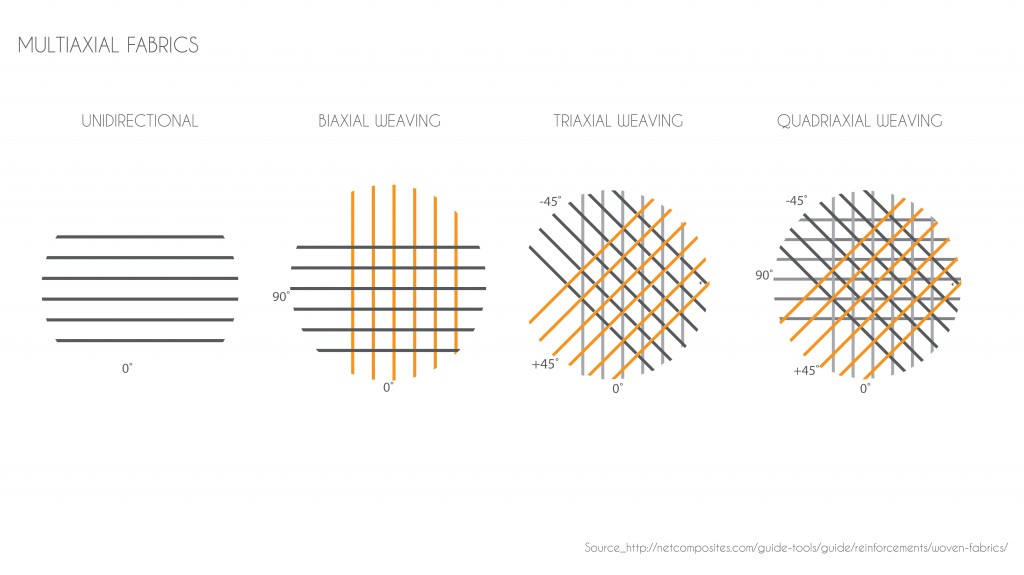
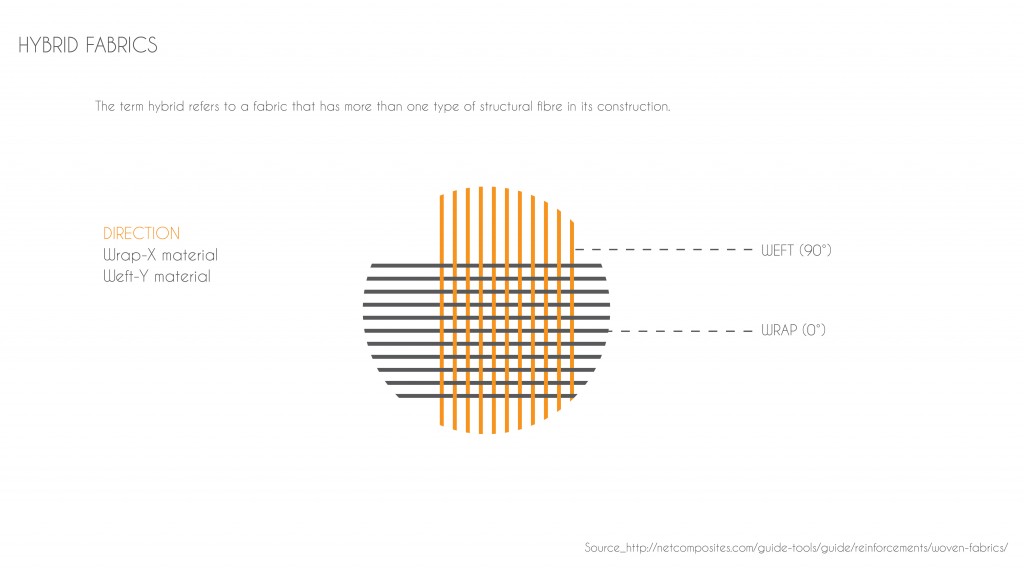
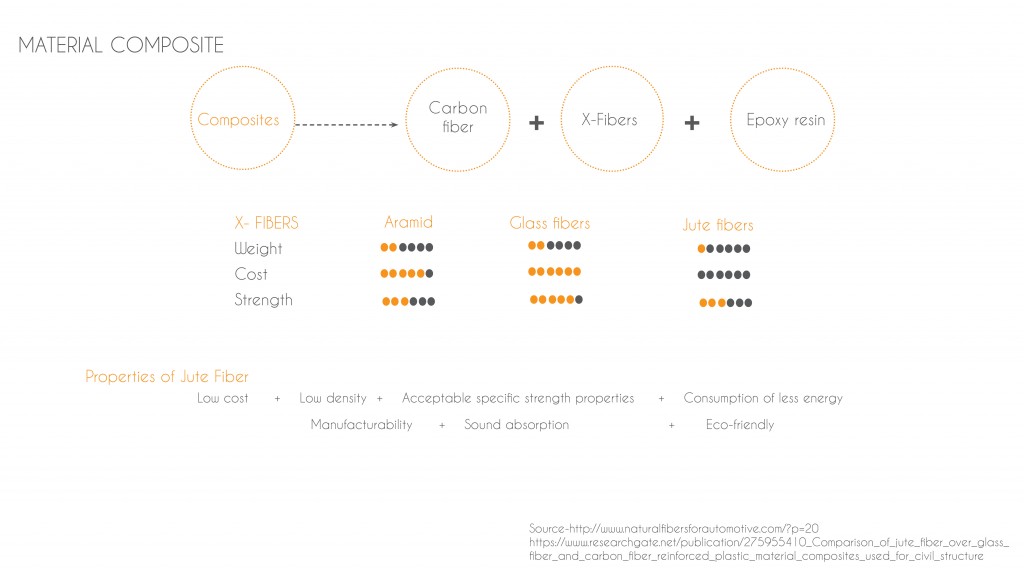
Jute The Natural Fiber: Among all the natural fibers, jute fiber appears to be a promising fiber and constitutes large area of investigation due to its good mechanical properties compared with other natural fibers, such as sisal, coir, and ramie. Jute fibres inherent characteristics of strength, versatility, being eco-friendly, etc can directly cater to technical and industrial requirements through its appropriate functional end uses. Jute fibers are susceptible toward moisture absorption from the surroundings. Jute fibers are renewable, nonabrasive, versatile, biodegradable, and compatible . The study showed that the use of natural fibre as reinforcement had increased many folds in recent years due to new environmental rules and customer demands. The increased demand of natural fibre is due to their low cost, low density, biodegradability, renewability and abundance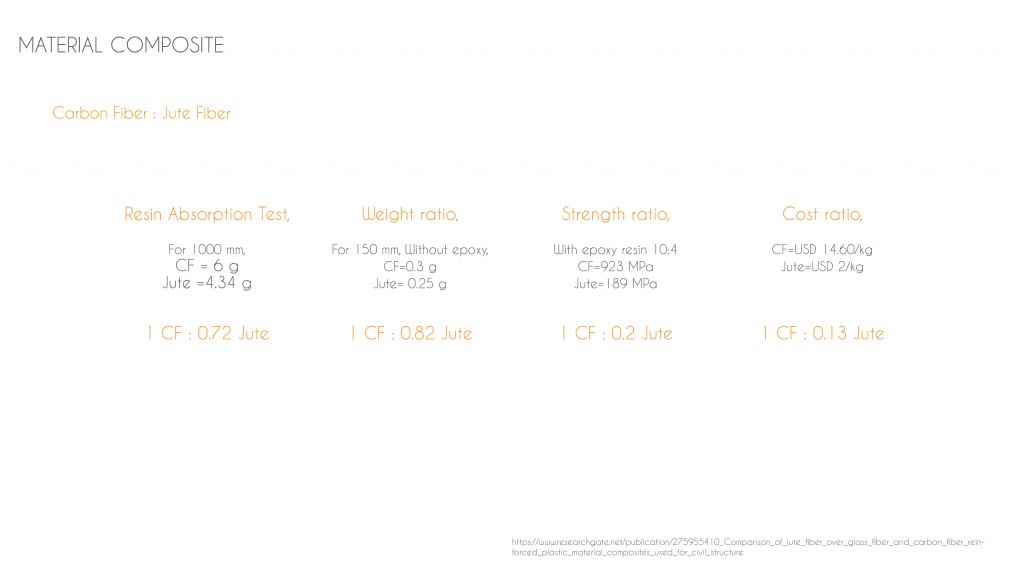
Weaving Prototype Experimentation 01-
The Pressure test experimentation is exploration of various weaving types , ie. Plain weave, twill, satin , leno weave in the combination of both, former made with only carbon fiber and later made of hybridised Carbon fiber with jute. The woven prototypes are subjected to the pressure test, and stress bearing capacity of the each woven system is recorded.
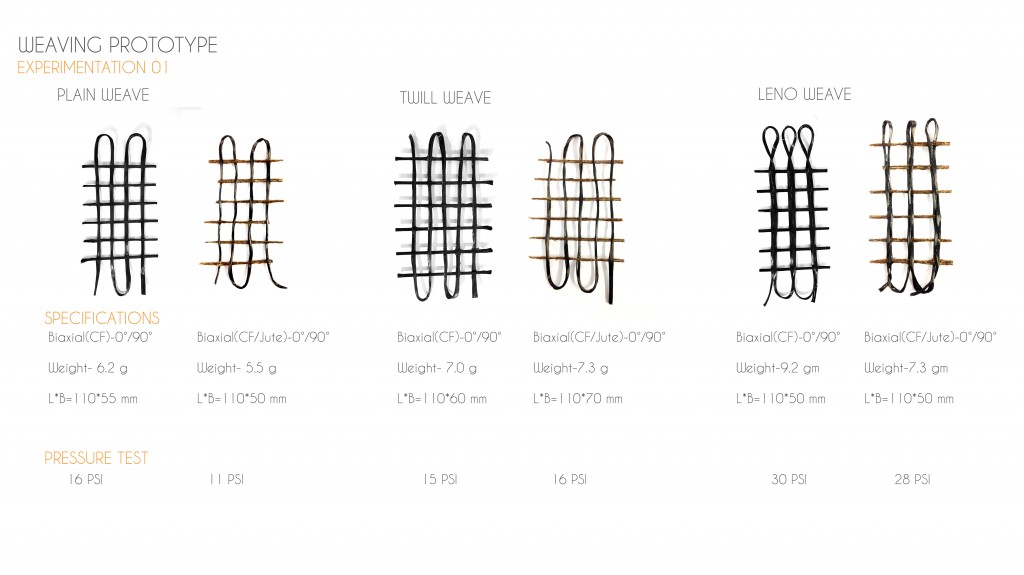
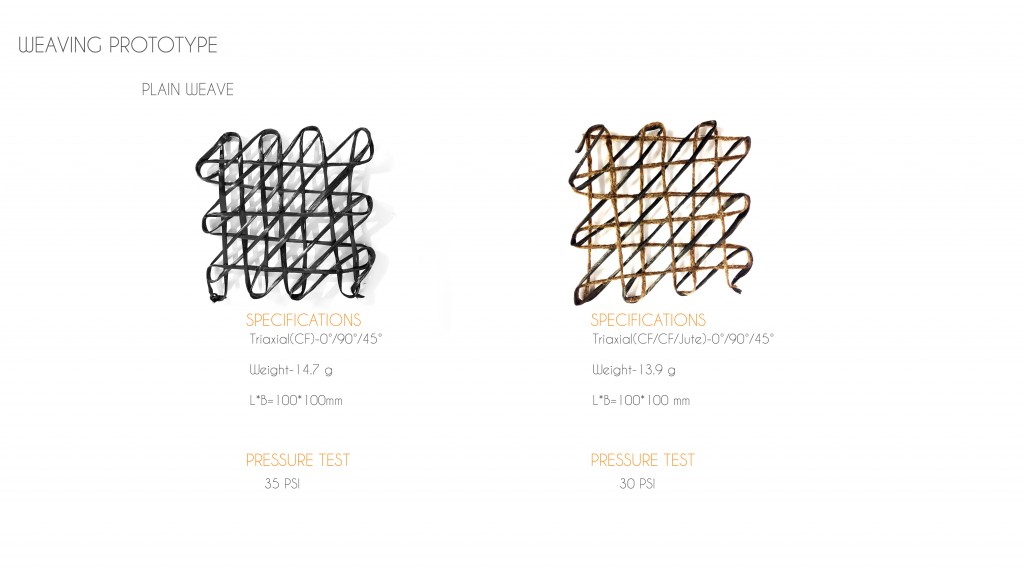
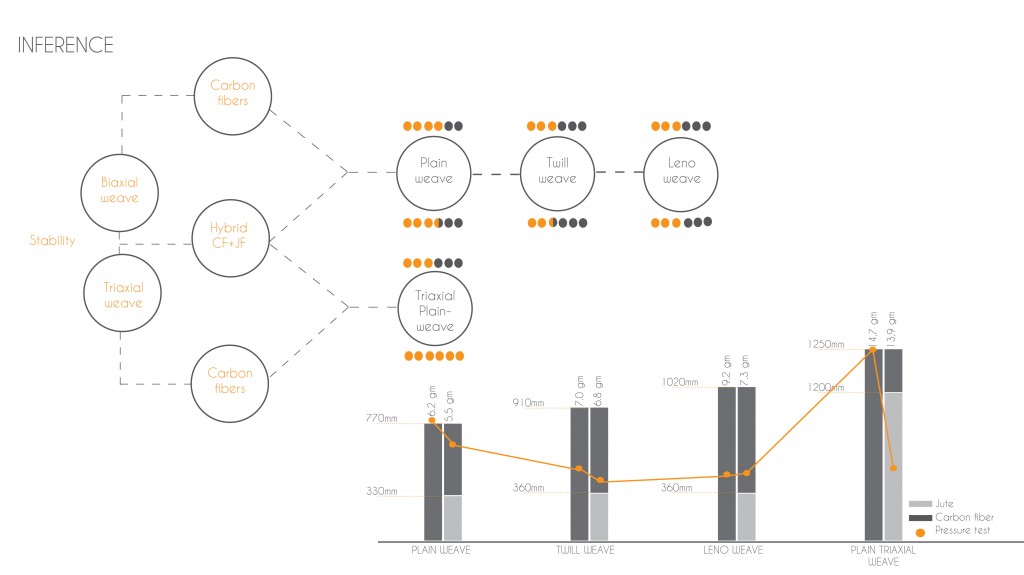
Weaving Prototype Experimentation 02-
The load transfer experimentation is to understand how different fibers carry load with different anchorages and with different density of fibers. The prototypes are subjected to the Pressure tes to find the load bearing capacity of the composite system and is recorded.
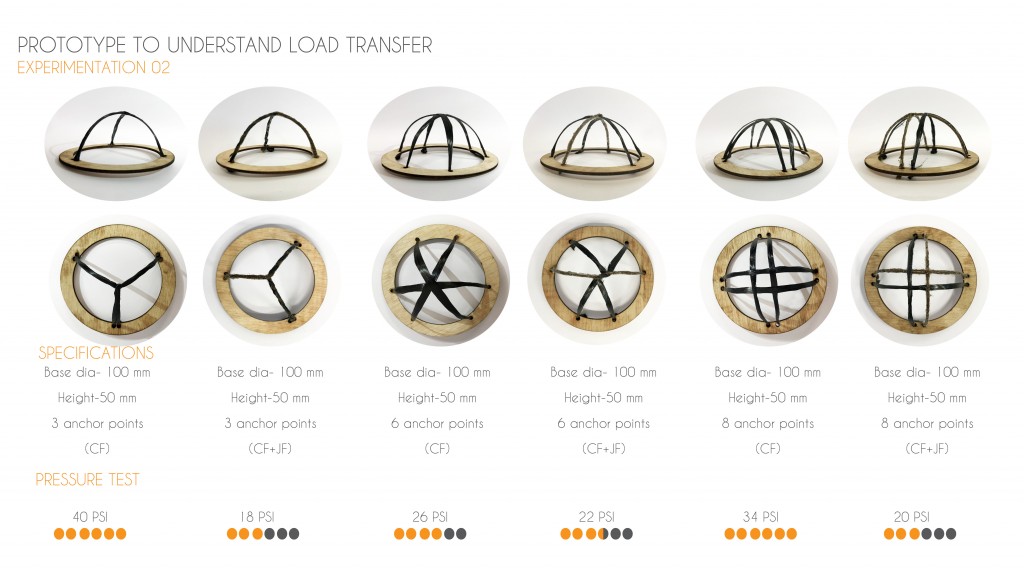
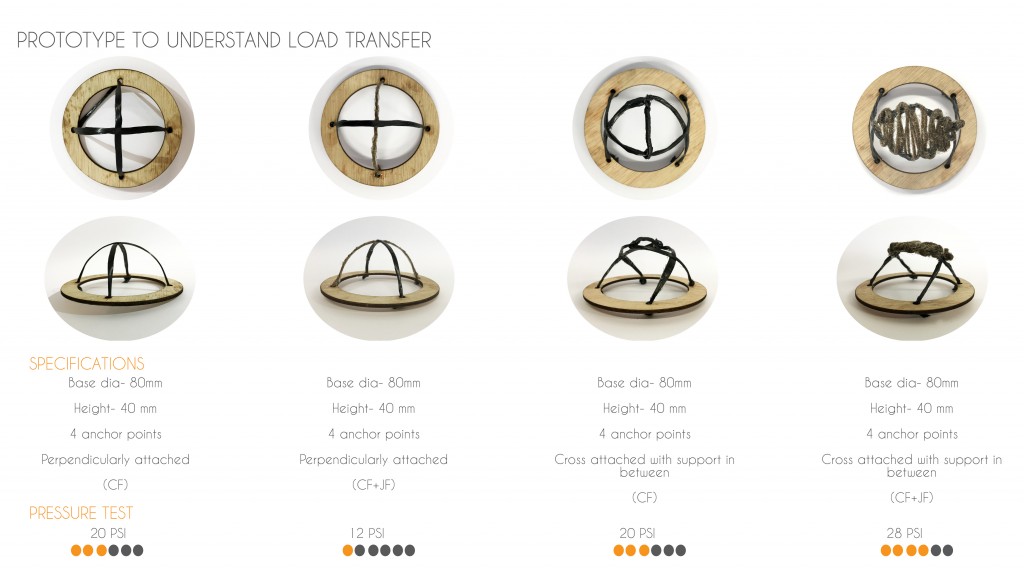
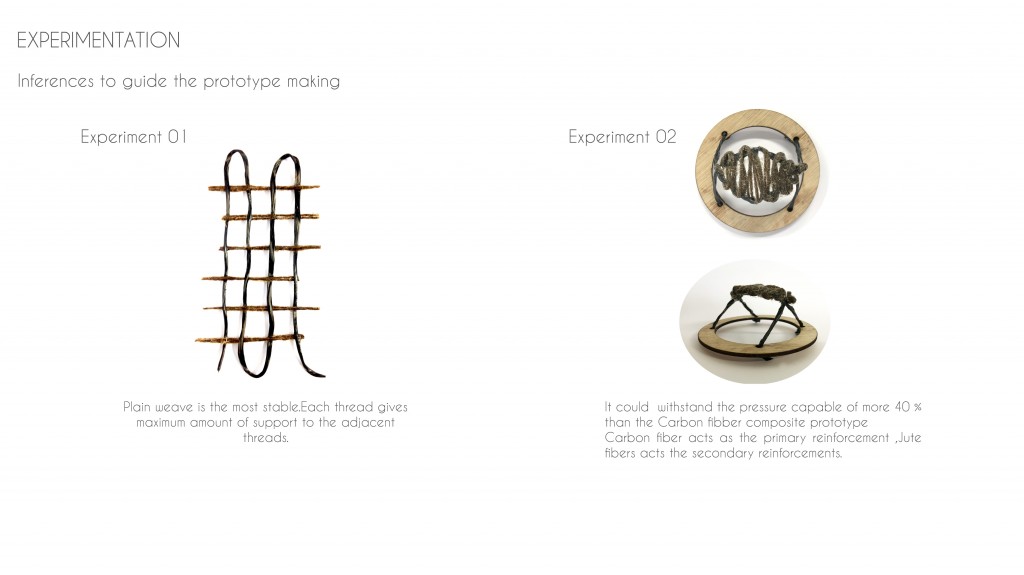 Results show that plain weave is the most stable and each thread gives maximum amount of support to the adjacent threads.
Results show that plain weave is the most stable and each thread gives maximum amount of support to the adjacent threads.
FOCUS OF THE RESEARCH
Digital Interface for providing a series of form finding process and customization of design based on the structural loads, it also offers the fabrication protocols that is related to the weaving strategies and the cost estimations of the whole structure.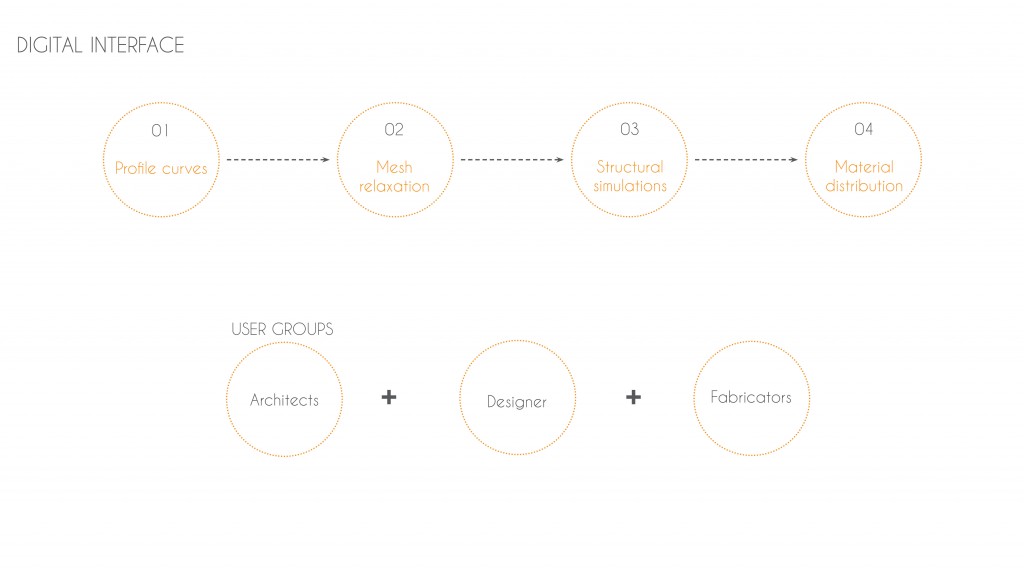
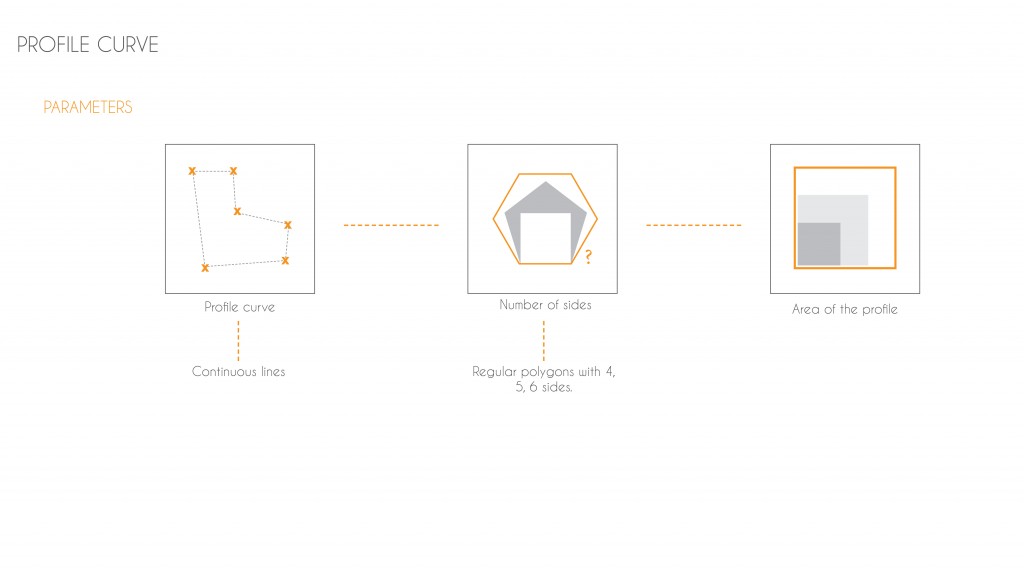
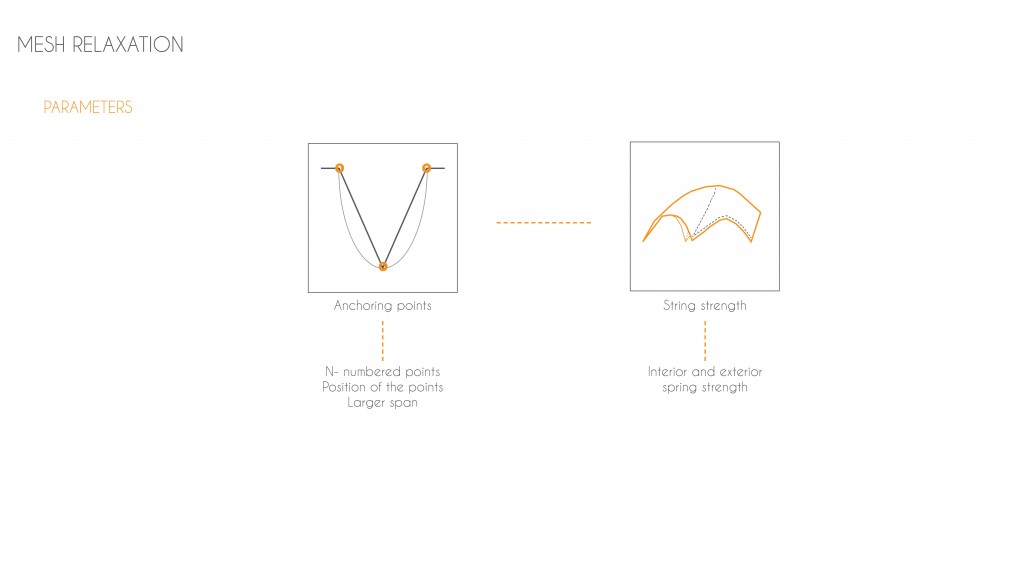
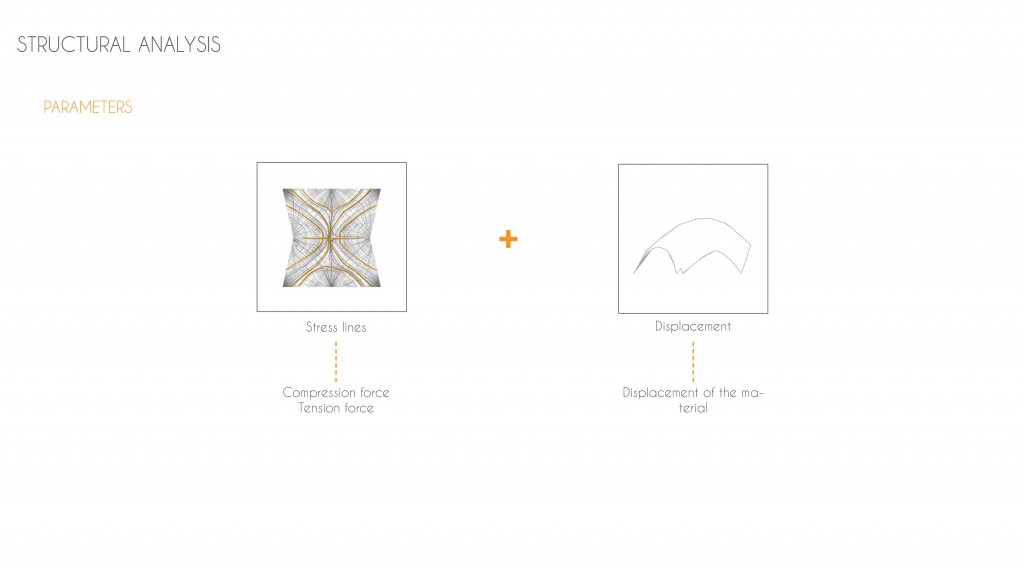

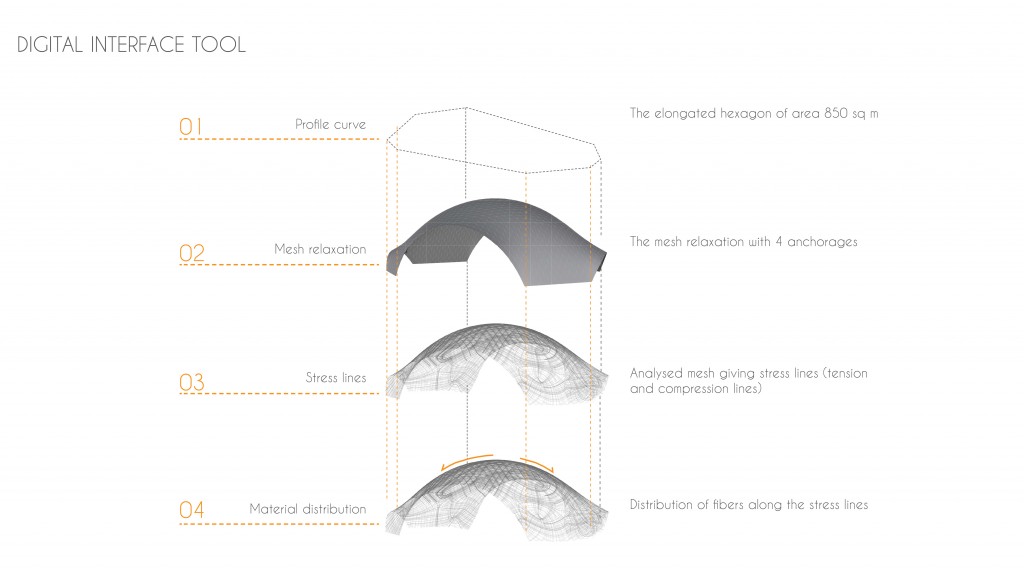
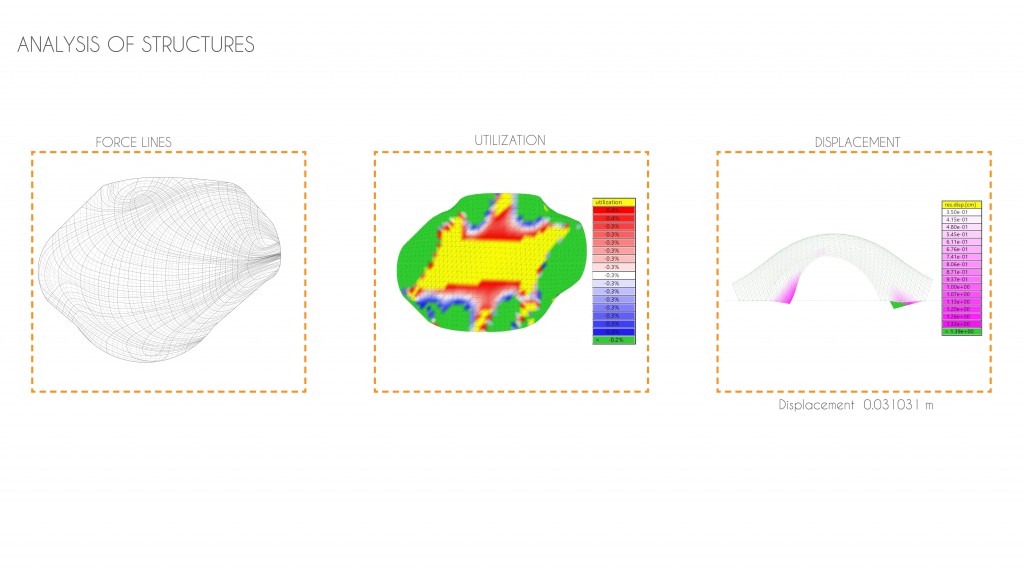
FABRICATION PROTOCOLS
The set of guidelines and rules to be considered for any woven structure that is informed by the digital tool.
Span of one continuous fiber: In Carbon fiber, Large span attained by continuous straight fiber which attains its tensile strength and thus are used as reinforcement. Jute cannot attain maximum span as carbon fiber so jute will be used as filler material
Crimp logic: Carbon fiber loses its property to attain its maximum tensile strength when curve is introduced due to crossing of two fibers in weaving. Jute acts lsecondry reinforcement material and thus weaving jute gives more stability and strength and thus control openings
Material distribution: The carbon fiber will cover the minimum surface area (skeleton)of the structure and jute will cover the maximum which with controlled density.
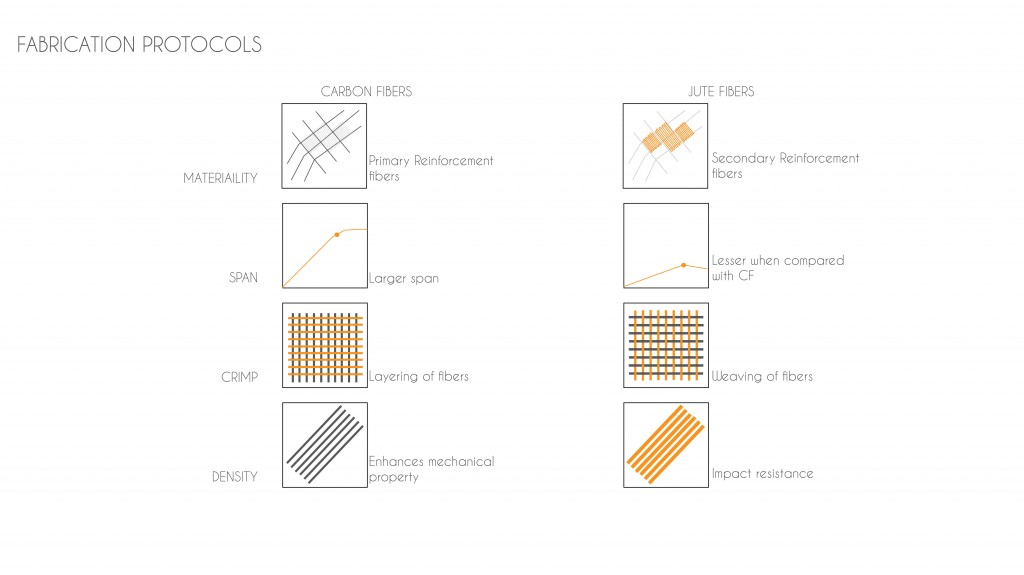
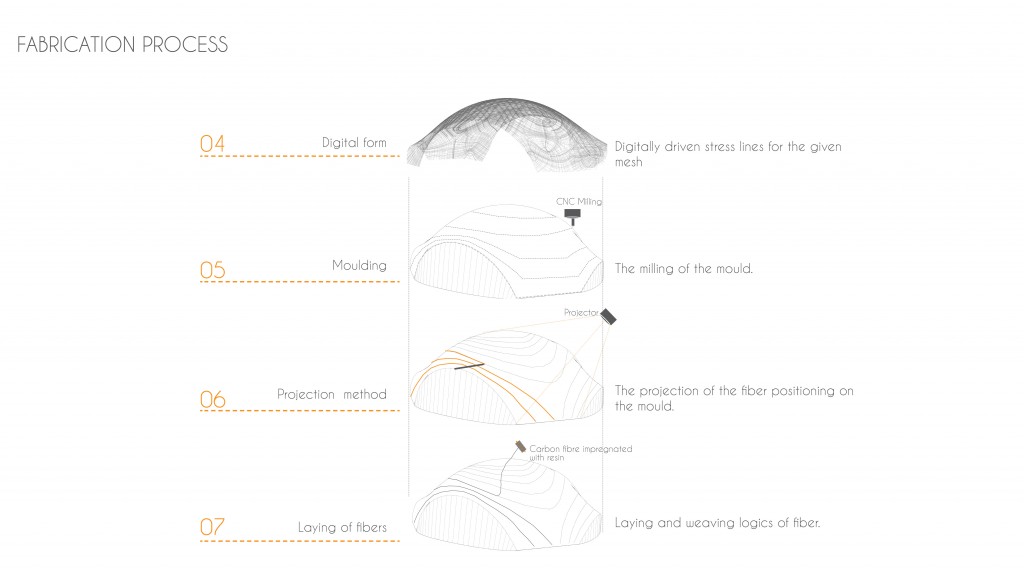
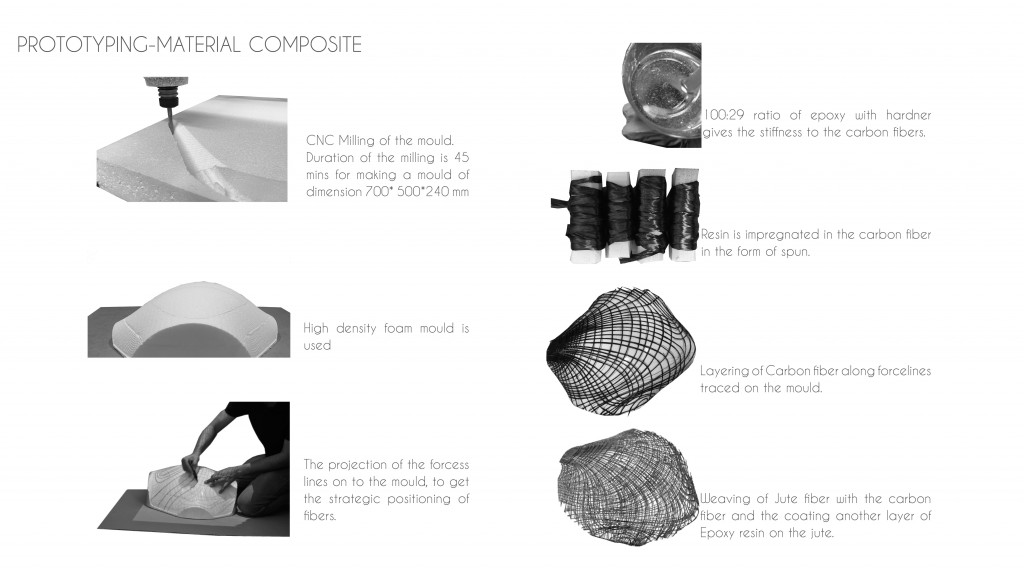
</p>
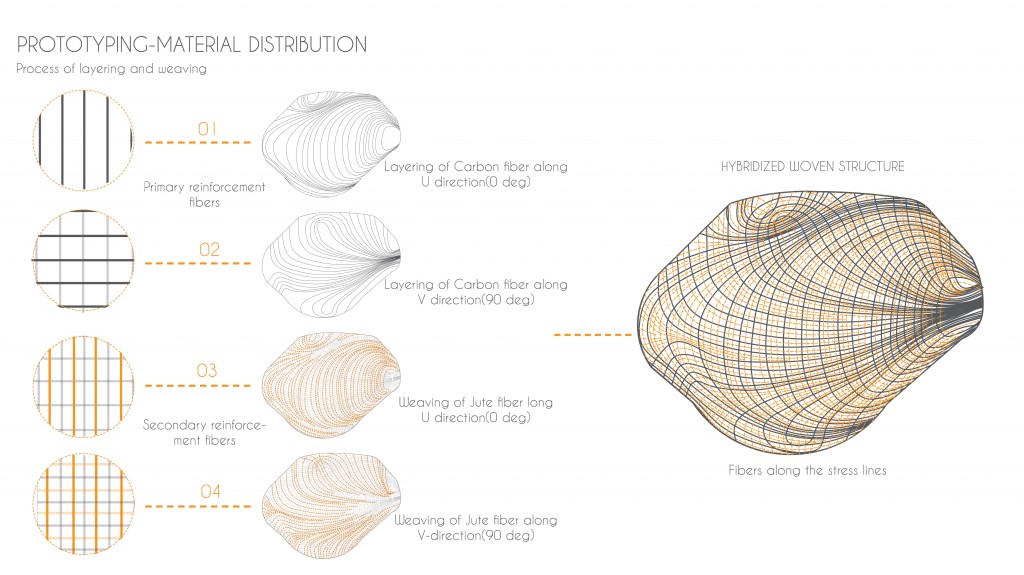
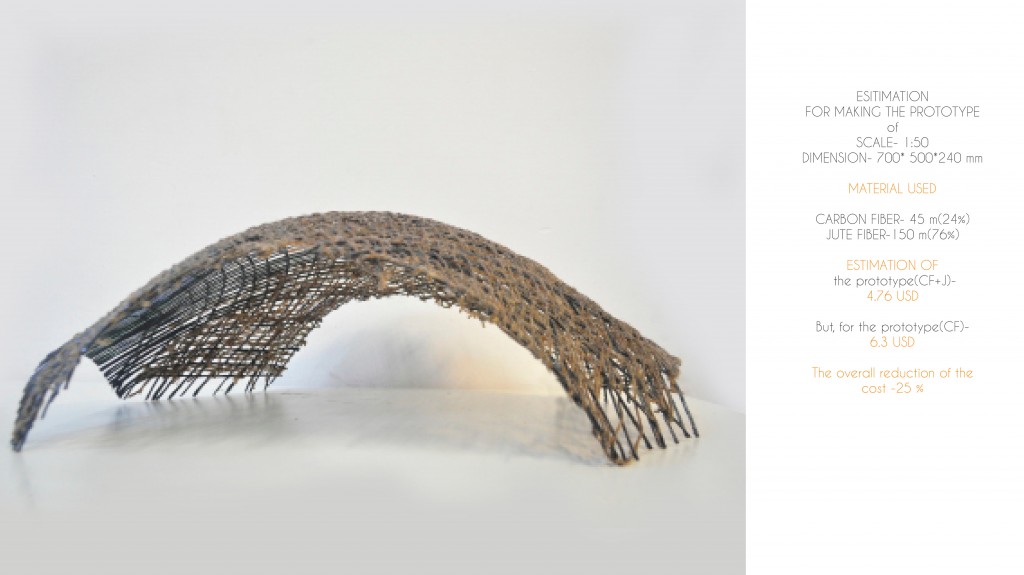
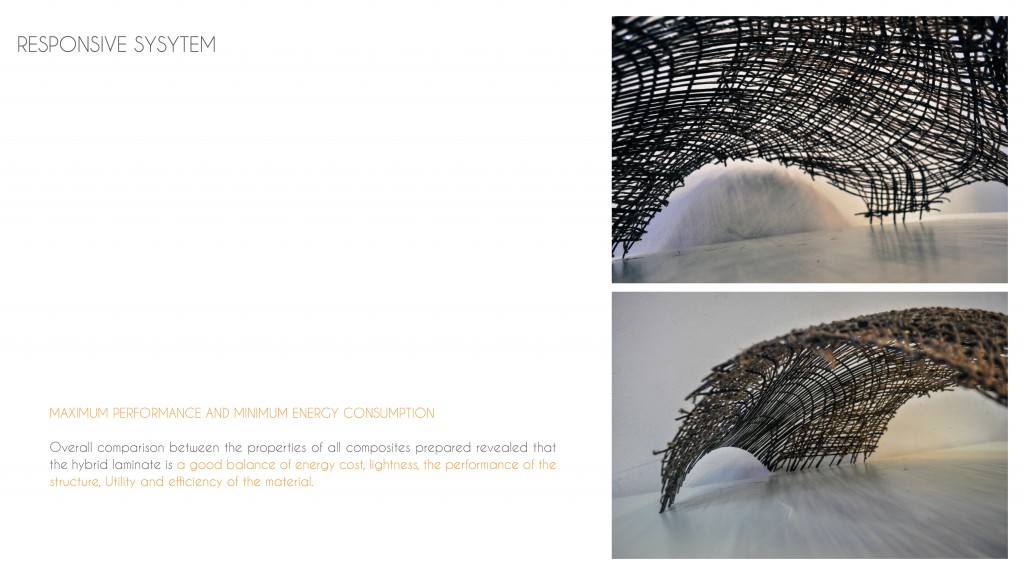

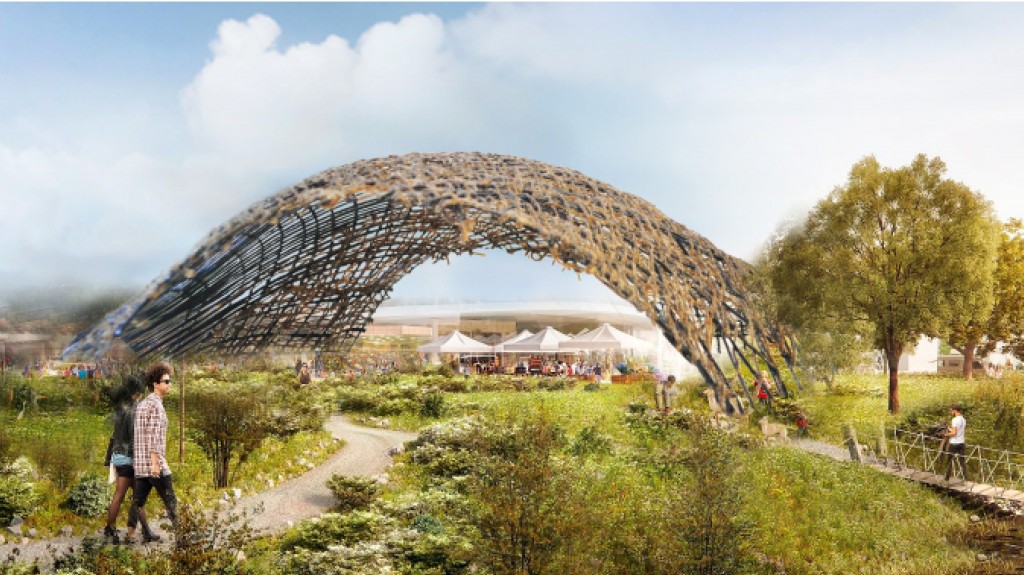
FIBER DYNAMICS– is a project of IaaC, Institute for Advanced Architecture of Catalonia, developed at Master in Advanced Architecture in 2016/2017 by:
Student: Archana Ravikumar, Mohammad Akram Khan, Shalini Brahma & Sujal Kodamadanchirayil Suresh
Tutors: Areti Markopoulou, Alex Dubor & Angelos Chronis
With help from:
Material Science Support: Carlos Saez
Computational Expert: Rodrigo Aguirre, Jayant Khanuja
Fabrication: FabLab team